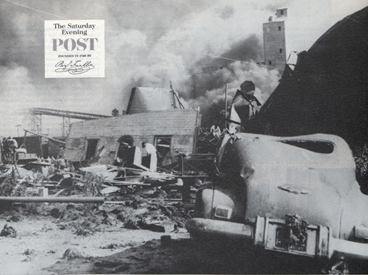Fertilizer Explosions: What Have We Learned From Past Disasters?
The devastating explosion at a fertilizer plant in West, Texas, on Wednesday, April 17, 2013, happened 66 years after one of the nation’s worst industrial disasters—also caused by a fertilizer explosion. On April 16, 1947, more than 500 people were killed and 3,000 injured as a series of violent explosions and fires demolished the Gulf Coast seaport of Texas City, Texas.
The Post reported on the events leading to the explosion of the S.S. Grandcamp vessel; the minute-by-minute account of the terrible blast; and the legal battle that followed.
As in West, Texas, many of the firefighters were killed, and there is speculation that the volunteer firemen may not have known how to fight a fertilizer fire. The Post noted that although they knew how to fight ship fires, oil, benzol and propane fires, there was no general current knowledge that ammonium nitrate would explode.
It is impossible to estimate the force of the Grandcamp explosion, but it is difficult to exaggerate it. Terminal buildings ceased to exist. Monsanto’s warehouse—a steel-and-brick structure—was flattened. The main power plant was similarly crushed, and, as the blast fanned out, walls of manufacturing buildings fell, partitions shredded, pipelines carrying flammable liquids were torn apart. Two sightseeing light planes, 1,500 feet above the Grandcamp, were blown out of the air, with the loss of four lives. Windows in Galveston and Freeport were shattered; the explosion was felt in Palestine, Texas, 200 miles away.
Read more in “Death on the Water Front” by Milton MacKaye (October 26, 1957).
